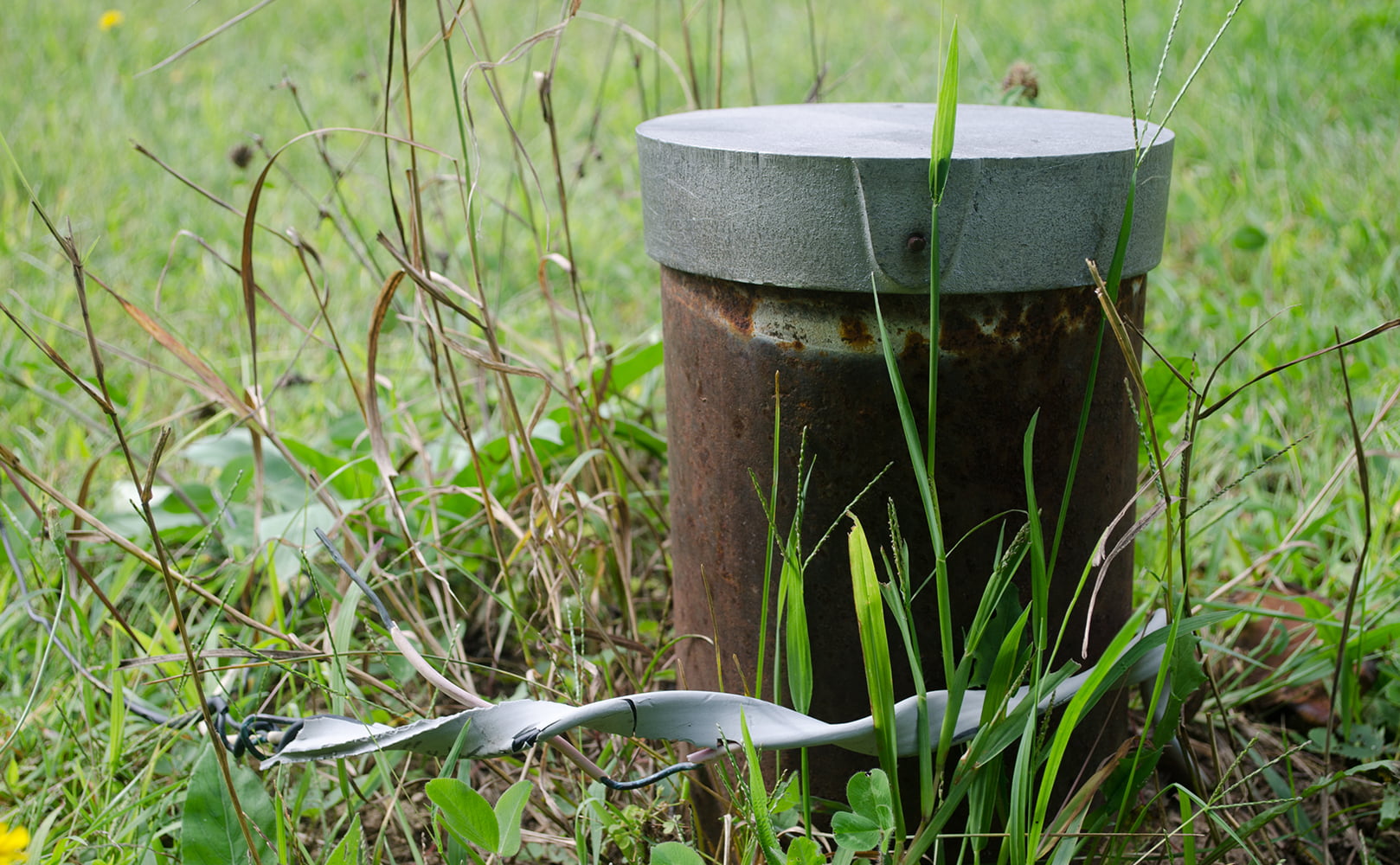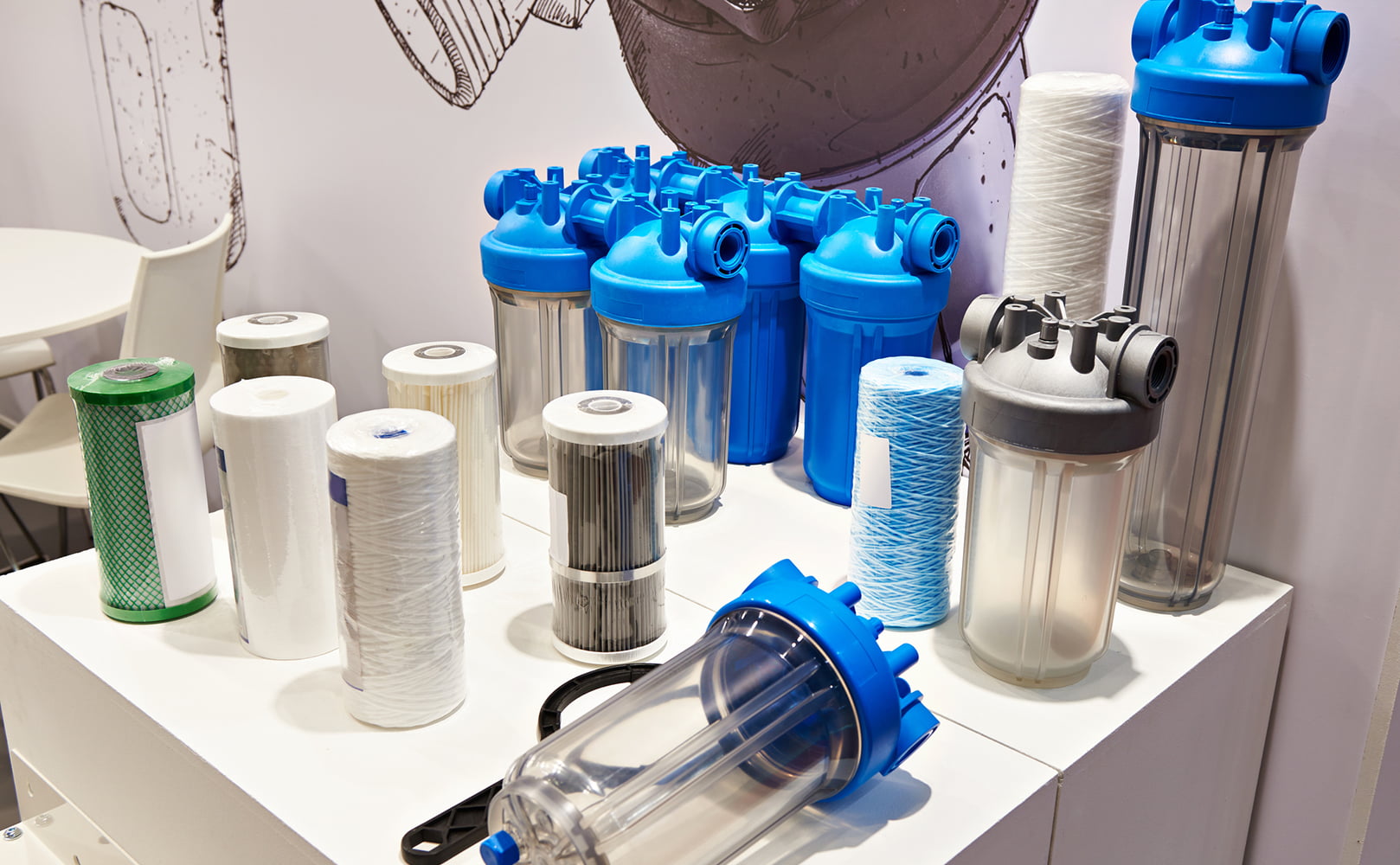Sand in Well Water Filter? Here’s What to Do!
Written by: Gene Fitzgerald // Last Updated: Oct 6, 2022
This page may contain affiliate links. If you buy a product or service through such a link we earn a commission at no extra cost to you. Learn more.
One of the drawbacks of getting your water supply from a well is that you may have to deal with sand getting in the way.
Sometimes the sand blocks your water filter’s pores and prevents it from functioning as it should.
Luckily, having sand in your well water filter is a minor issue you can resolve quickly. In this article, we’ll discuss why you may find sand in your well water filter and how to get rid of it quickly.
Key Takeaways
Here are things you can try to resolve the sand-in-your-well-water-filter issue:
- Contact a water treatment professional or well contractor to help you identify the source of the problem: Your well might be too shallow; the well screen, casing, or drop pipe could have worn out; the well pump could be of the wrong size or misplaced.
- Have your water tested to identify the type of sand present. Choose the ideal filter accordingly.
- You can add an additional filter strictly to remove sand. There are centrifugal sand separators, spin-down filters, sand filter cartridges, and backwashing filters.
Causes for Sand in a Well Water Filter
Several factors may be responsible for sand in your well water filter. These are:
Problems with Your Well
Here are a few problems originating from your well that may cause sand to get into your well water and consequently the filter system in use:
Well Construction
The quality of materials and practices used in your well’s construction can significantly affect it. For example, when a well is not drilled, cemented, or cased correctly, the walls may start crumbling gradually, causing sand and sediments to enter the water.
The problem can also come from the well development process (it is a process carried out after a well is drilled to remove sand, silt, and foreign materials). If a well is not developed properly, sand can easily get into the well water.
There’s also the issue of how old or deep the well is. If your well shaft is old, it may be more vulnerable to being worn out by the elements, which will cause debris to fall into the well.
You may also experience the sand issue if there’s a leak in the well’s drop pipe. The leak may cause your well pump to randomly turn itself off and on. The implication is that sand gets pulled into your water system during every restart.
Well Casing/Screen
A well casing is a tubular structure made of PVC, iron, or steel and used to keep a well from disintegrating. In addition, there is what’s called a well screen.
Both well casing and screen are supposed to keep out any sand or debris from entering a well. However, over time, they may deteriorate. When this happens, sand can leak into the well along with the groundwater. And when you pump water from the well, the sand follows the water to get into your plumbing system and possibly blocks your well water filter.
Well Pump
Many things can go wrong with your well pump and lead to sand entering your water system and filter.
- For example, if your pump is placed too close to the bottom of the well, its high suction might begin to draw sand in along with water. Usually, a pump should be at least 10 to 20 ft above the base of the well.
- Many well pumps are submersible, so they naturally have high suction pressure. However, if your pump’s power is too high, its suction may be able to pull in not just water but sand and soil. This will cause serious problems for your water quality, pump, and filter.
- Another issue is the size of the pump. A large pump can cause water to flow too quickly and carry sand along with it. Even if it’s just the inlet valve that has a large diameter, there’s a risk that heavy sediments will easily pass through it.
It May Be Normal
Last but not least and although it’s inconvenient, having a bit of sand in a well water filter can be perfectly normal (because wells are drilled in the ground). There may be nothing wrong with your well’s structure at all.
What to Do About Sand in Well Water Filters?
There’s a list of things you can do to resolve the sand-in-your-filter issue, so like we’ve said, don’t give up hope that you can enjoy good quality water.
Get Your Well Fixed
Once you’ve determined the exact source of the sand problem in your well, get it fixed right away. You may not be able to find the problem on your own, so it’s advisable to contact a water treatment professional or well contractor to assist you.
- If your well is too shallow, they might recommend that you drill it a bit deeper.
- An old well shaft might need replacement.
- Degraded well screens or casings can be repaired or replaced if they’re too far gone.
- The well pump can be lifted higher up in the well, repaired, or replaced depending on the exact problem.
- Drop pipes could be pulled out for inspection, but if it’s not feasible, you may replace them.
Identify the Type of Sand By Having Your Water Tested
Before trying to figure out how to get the sand out of your well water, try to have a sample of the sand tested to find out which type it is. Testing it will help you find the best way to filter the sand in your water. You’ll also get information about the approximate amount of sand in your well and if it may be harmful to your health.
Consider Buying an Additional Sand Water Filter for Your Well
One way to avoid having sand in your filter is to get another filter strictly to remove sand. That way, your existing filter can do the work you bought for it without any obstructions.
Here are some of the best types of sand filters:
Centrifugal Sand Separators
Centrifugal sand separators are devices that combine gravitational, centrifugal, and inertial forces to divide substances.
When water with sand gets into the separator, it is spun at high speed. This allows gravity to drag down all the sediments and sand while the water stays on top. Once the water reaches a certain height in the separator, it is pushed back into the plumbing system.
Meanwhile, any sand collected can be flushed out using a ball valve at the bottom of the system. Some machines require you to flush manually, others are fully automated.
Centrifugal separators are highly effective removing up to 98% of sand from wells. All you have to do is install one between your well and the pressure tank so that they filter the water before it enters your plumbing system.
Spin Down Filters
Spin down filters are sand removal systems often used as an alternative to centrifugal sand separators. Their principle of operation is similar because they both spin the water before separating it. In addition, spin down filters use a screen to trap chunks of sediment, sand, or debris.
Spin down filters are quite effective but aren’t adequate in cases with too much sand in well water. This is mainly because they require regular maintenance and must be flushed frequently.
Sand Filter Cartridges
Sand or sediment filter cartridges are also great options.
Backwashing Filters
Backwashing filters, also known as tank-style filters, are another alternative. Backwashing filters reverse the water flow to clean their filter bed.
Is Sand in Well Water Dangerous to My Health?
As unpleasant as it can be to taste or feel sand in your water, it doesn’t seriously threaten your health. It’s more of a nuisance because it changes your water’s color, taste, and odor.
However, sometimes sediments may come with microorganisms that can affect your health. So it’s still necessary to get your water tested to be on the safe side.
Professional Help
When in doubt, talk to the pros. You may have some experience dealing with the plumbing in your home, but every issue is unique, especially those involving complex structures such as a well. If you try to fix things yourself, you may end up causing more damage and incurring more expenses for yourself.
A professional will help you pinpoint the exact problem and a solution while saving time and money.
If you have any questions about sand in well water filters please don’t hesitate to leave a comment below!
Information provided on BOS is for educational purposes only. The products and services we review may not be right for your individual circumstances.
We adhere to strict editorial guidelines. Rest assured, the opinions expressed have not been provided, reviewed, or otherwise endorsed by our partners – they are unbiased, independent, and the author’s alone. Our licensed experts fact-check all content for accuracy. It is accurate as of the date posted and to the best of our knowledge.



